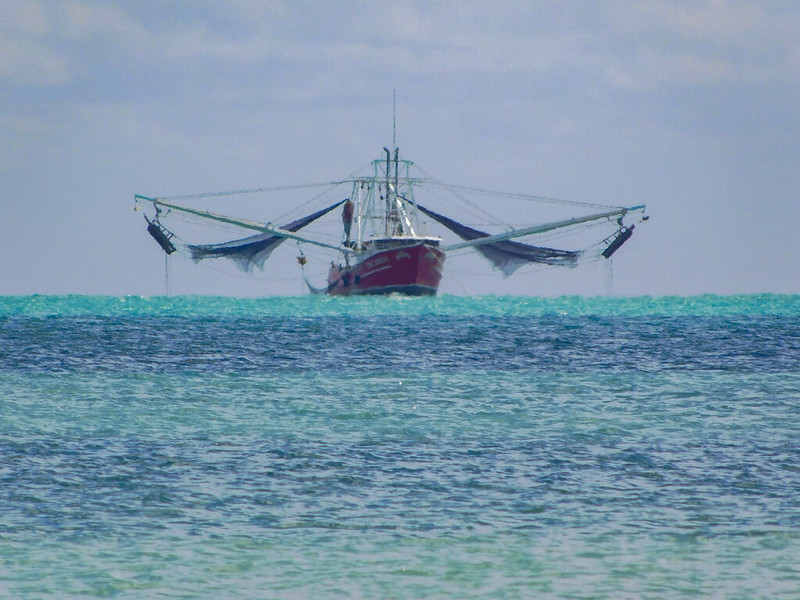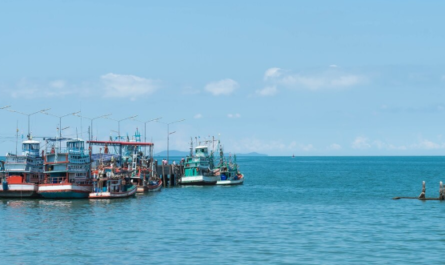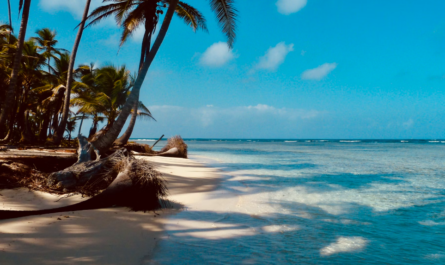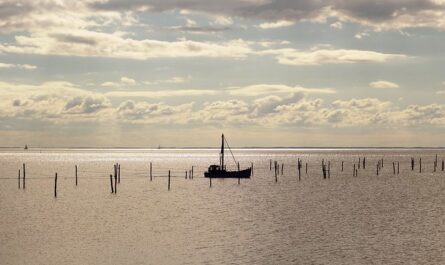The Atlantic Ocean is a vital resource for global biodiversity and human livelihoods, and aquaculture has emerged as one of the fastest-growing industries in this vast marine ecosystem. Aquaculture, or fish farming, is often seen as a solution to meet the growing demand for seafood and alleviate pressure on wild fish stocks. However, it comes with its own set of environmental challenges.
This article delves into the environmental impact of aquaculture in the Atlantic, explores the challenges of balancing industry growth with marine health, and highlights sustainable practices that can ensure the longevity of this essential sector.
The Rise of Aquaculture in the Atlantic
1. Global Seafood Demand and the Need for Aquaculture
The global population’s increasing appetite for seafood has driven the rapid expansion of aquaculture. Overfishing and declining wild fish stocks have made fish farming a necessary alternative.
- Statistics: As of 2020, aquaculture accounted for over 50% of global seafood production, with the Atlantic playing a significant role in this growth.
- Atlantic Contribution: Key regions for Atlantic aquaculture include Norway, Scotland, Canada, and the U.S., with species like Atlantic salmon, cod, and shellfish dominating production.
2. Economic Significance
Aquaculture contributes billions of dollars to the economies of Atlantic-bordering countries and provides livelihoods for millions.
- Employment: The industry supports coastal communities by creating jobs in farming, processing, and distribution.
- Exports: Countries like Norway and Canada lead the export of Atlantic aquaculture products, meeting global demand for high-quality seafood.
3. Aquaculture Methods in the Atlantic
Aquaculture operations in the Atlantic employ various techniques, each with unique environmental considerations:
- Open-Net Pens: Enclosures in coastal waters where fish are raised in natural currents.
- Recirculating Aquaculture Systems (RAS): Land-based systems that recycle water to minimize environmental discharge.
- Shellfish Farming: The cultivation of oysters, mussels, and clams, often viewed as environmentally friendly.
Environmental Impacts of Aquaculture in the Atlantic
While aquaculture offers a solution to overfishing, it has a significant environmental footprint. The following sections outline the major impacts on marine ecosystems.
1. Nutrient Pollution and Eutrophication
Fish farming, particularly in open-net systems, introduces excess nutrients into the water from fish waste, uneaten feed, and chemical inputs.
- Eutrophication: Nutrient runoff can lead to algal blooms, depleting oxygen levels and creating dead zones where marine life cannot survive.
- Affected Areas: Coastal regions with dense aquaculture operations, such as Norwegian fjords, are particularly vulnerable.
2. Escaped Farmed Fish
Escapes from aquaculture facilities pose significant risks to wild fish populations.
- Genetic Dilution: Farmed fish interbreeding with wild populations can reduce genetic diversity and weaken adaptive traits.
- Disease Spread: Escaped fish may introduce pathogens or parasites, such as sea lice, to wild stocks.
3. Habitat Destruction
Aquaculture operations often displace or degrade sensitive marine habitats.
- Coastal Development: Clearing mangroves and wetlands for aquaculture reduces critical habitats for marine species and natural coastal defenses.
- Seafloor Impact: The accumulation of waste beneath fish pens can smother benthic ecosystems, impacting species that depend on the seafloor.
4. Chemical Pollution
The use of antibiotics, pesticides, and antifoulants in aquaculture can have unintended consequences for marine health.
- Antibiotic Resistance: Excessive use of antibiotics can lead to resistant bacteria, posing risks to marine life and human health.
- Toxicity: Chemicals used to combat parasites like sea lice can harm non-target species, including crustaceans and shellfish.
5. Pressure on Wild Fish Stocks
Paradoxically, aquaculture can increase demand for wild fish.
- Fish Feed: Many farmed fish are fed fishmeal and fish oil derived from wild-caught fish, placing additional pressure on forage species like anchovies and sardines.
- Imbalanced Food Webs: Harvesting forage fish disrupts the diets of predators like seabirds and marine mammals.
Climate Change and Aquaculture in the Atlantic
Aquaculture in the Atlantic is both impacted by and contributes to climate change.
1. Rising Ocean Temperatures
Warmer waters affect the growth and health of farmed species.
- Thermal Stress: Species like Atlantic salmon are particularly sensitive to temperature changes, which can increase disease outbreaks.
- Shifts in Suitable Areas: Warming waters may force farms to relocate, impacting ecosystems and coastal communities.
2. Carbon Footprint
Aquaculture contributes to greenhouse gas emissions through feed production, transportation, and energy use.
- Feed Production: The cultivation of soy and fishmeal for feed involves deforestation and overfishing, releasing significant carbon emissions.
- Energy Use: Recirculating aquaculture systems, while environmentally controlled, require substantial energy inputs.
Balancing Growth with Marine Health: Sustainable Practices
1. Improved Farming Techniques
Adopting innovative farming methods can minimize environmental impact.
- Integrated Multi-Trophic Aquaculture (IMTA): Combines species like fish, shellfish, and seaweed in one system, utilizing waste as nutrients and promoting ecosystem balance.
- Land-Based Systems: Recirculating aquaculture systems reduce nutrient discharge and eliminate escape risks.
2. Eco-Friendly Feed Alternatives
Reducing reliance on wild fish for feed is essential for sustainability.
- Plant-Based Feeds: Alternatives like algae, soy, and insect protein can replace fishmeal and fish oil.
- Feed Efficiency: Advances in feed technology reduce waste and improve nutrient uptake.
3. Monitoring and Regulation
Robust monitoring and enforcement of environmental standards are critical.
- Regulatory Frameworks: Governments and international organizations must enforce policies that limit nutrient discharge, habitat destruction, and chemical use.
- Technological Tools: Satellite monitoring and data analytics can track farm performance and environmental impacts in real-time.
4. Community Involvement
Engaging local communities in aquaculture planning and decision-making ensures equitable outcomes.
- Benefit Sharing: Revenue from aquaculture should support coastal communities and fund conservation initiatives.
- Traditional Knowledge: Incorporating local practices can enhance sustainability and cultural acceptance.
Case Studies: Lessons from Sustainable Aquaculture Practices
1. Norway: Balancing Industry Growth with Conservation
Norway, a global leader in Atlantic salmon farming, has implemented strict environmental regulations to mitigate aquaculture’s impact.
- Regulations: The Norwegian government enforces limits on stocking density, nutrient discharge, and chemical use.
- Technology: Innovations like offshore aquaculture and closed-containment systems have reduced environmental pressure.
2. Canada: Protecting Wild Salmon
In British Columbia, efforts to transition from open-net pens to land-based systems aim to protect wild salmon populations.
- Challenges: High costs and infrastructure requirements pose barriers to widespread adoption.
- Successes: Pilot projects demonstrate reduced disease transmission and improved fish welfare.
3. Chile: Recovery Through Reform
Chile’s aquaculture industry faced a crisis in the mid-2000s due to disease outbreaks and environmental degradation. The government implemented reforms to restore balance.
- Zoning Plans: Designated farming areas reduce overcrowding and habitat destruction.
- Disease Management: Enhanced biosecurity measures and reduced antibiotic use have improved ecosystem health.
The Role of Consumers in Promoting Sustainable Aquaculture
Consumers play a crucial role in driving sustainable practices in aquaculture.
1. Choosing Certified Products
Eco-labels like the Aquaculture Stewardship Council (ASC) and Best Aquaculture Practices (BAP) guide consumers toward responsibly farmed seafood.
2. Reducing Seafood Waste
Minimizing food waste reduces demand pressure on aquaculture and wild fisheries.
3. Advocacy and Awareness
Supporting organizations and policies that prioritize sustainable aquaculture helps amplify the call for industry reform.
Conclusion: A Path Toward Sustainability
Aquaculture in the Atlantic holds immense potential to meet global food demand while alleviating pressure on wild fish stocks. However, its environmental impacts cannot be overlooked. Balancing growth with marine health requires a combination of innovative technologies, stringent regulations, and collaborative efforts among governments, industries, and communities.
By embracing sustainable practices and fostering awareness, the aquaculture industry can evolve into a model of ecological harmony. The Atlantic Ocean, a cradle of life and biodiversity, deserves nothing less than a commitment to preserving its health for future generations.



